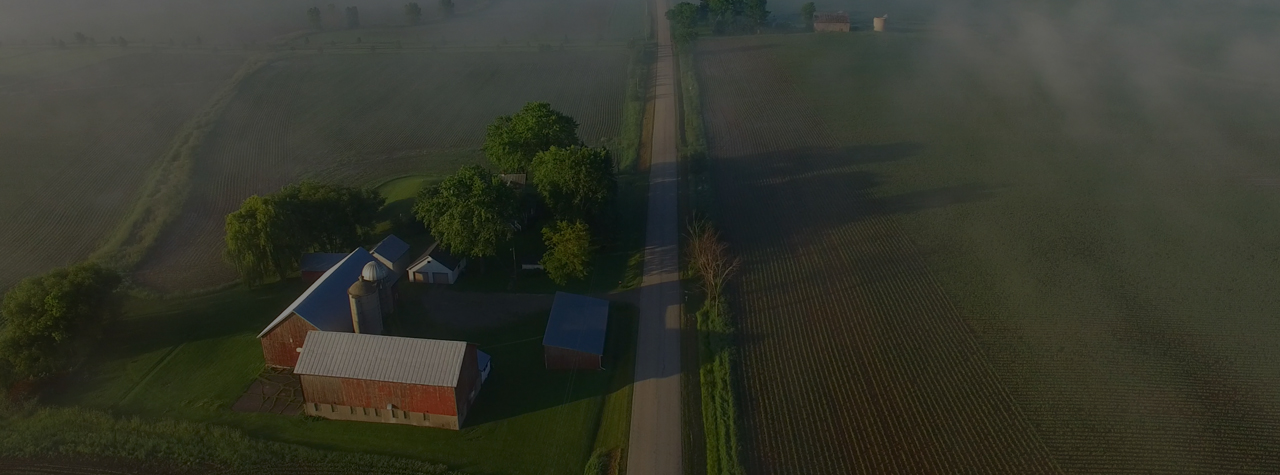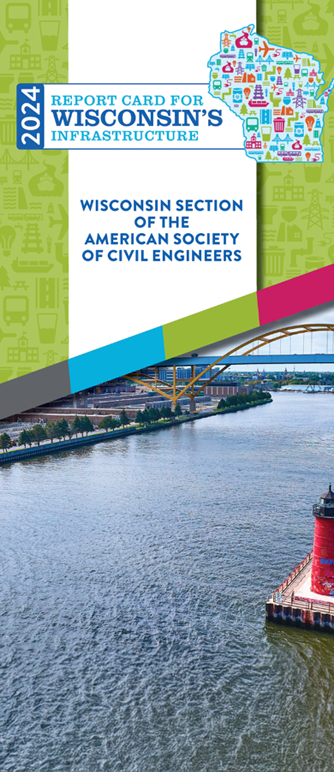2024 Wisconsin Infrastructure Report Card
2024 Report Card GPA: C+
Infrastructure in Wisconsin consists of multipurpose, wide-ranging systems spanning transportation, water, energy, and broadband, among others. ASCE members in Wisconsin are proud to be the first state in the nation to deliver a grade for telecommunications service among our Report Cards for State Infrastructure. The 2024 Wisconsin Report Card also examines the physical infrastructure of Wisconsin’s public parks and rail for the first time. After extensive research, we determined that available data are insufficient to grade school facilities and therefore reported an “I” for incomplete. Overall, of the 17 categories, the report finds infrastructure performance in Wisconsin has improved from our prior evaluation in 2020.
Wisconsin’s infrastructure is benefiting from the Infrastructure Investment and Jobs Act (IIJA), a five-year federal investment increasing funding across all infrastructure categories ASCE evaluates. As of June 2024, the IIJA and two other federal measures from 2022 focused on climate and American manufacturing have delivered $7.1 billion of public funding to Wisconsin, which the White House estimates is being matched with $4 billion more of private sector investments. These dollar figures include big buckets of game-changing funds like $1 billion now harnessed by Wisconsin’s Broadband Office. Other infrastructure needs are also being addressed. Milwaukee is using $41 million to replace lead service lines from its drinking water network, and a two-lane bridge over Springbrook Creek in northeastern Wisconsin will be replaced with additional bicycle and pedestrian features thanks to a $13.5 million federal grant.
Owning, operating, and maintaining Wisconsin’s infrastructure systems is a continuous endeavor, and increased funding meets new challenges of inflation, workforce shortages, and extreme weather. Management of hazardous and solid wastes has improved, but emerging knowledge and regulations of “forever chemicals” create future needs, particularly for water systems. Parks and schools serve nearly all Wisconsin residents, but state-level restrictions on local funding methods have resulted in significant maintenance backlogs. With enhanced public information and awareness among decision-makers, the state can renew, modernize, and invest in our infrastructure to maintain its competitiveness.
To read about how each category of infrastructure scored, keep scrolling or read the Report Card for Wisconsin’s Infrastructure Executive Summary.
-
Explore Wisconsin
- Grades
- State Fact Sheet
- IIJA Grants
Wisconsin Infrastructure Grades
A: Exceptional, B: Good, C: Mediocre, D: Poor, F: Failing
Each category was evaluated on the basis of capacity, condition, funding, future need, operation and maintenance, public safety, resilience, and innovation
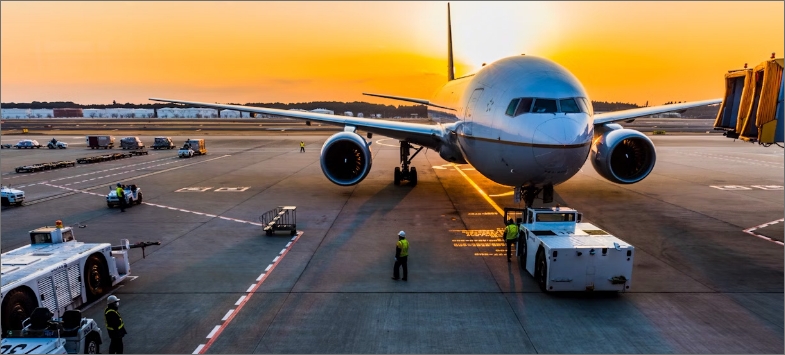

Aviation
The Wisconsin aviation network includes 97 airports, 87 of which are part of the National Plan of Integrated Airport Systems. Eight airports provide commercial airline services. In 2022, commercial airlines transported more than 4.4 million passengers, an increase of 18.9% over 2021, but still behind the 5.5 million passengers recorded in 2019. This reduction alleviated capacity challenges emerging at some airports before the COVID-19 pandemic. Lower passenger numbers will be short-lived, as these same airports have already exceeded or will exceed their pre-pandemic numbers in 2024. In general, the condition of commercial aviation airports meets or exceeds standards based on the Wisconsin State Airport System Plan 2030. At the same time, many aspects of the general aviation airports are below standard, especially in factors such as runway and taxiway lighting, visual aids and approach lighting, and terminal facilities. Airports have identified $166 million in construction projects from 2023-2027 during the most recent five-year Airport Improvement Program, but data is only from commercial service airlines. According to the Airports Council Internation, Wisconsin airport infrastructure needs total $1.4 billion from 2023 to 2027. That’s compared to only $400 to 450 million of funding available over the same period.
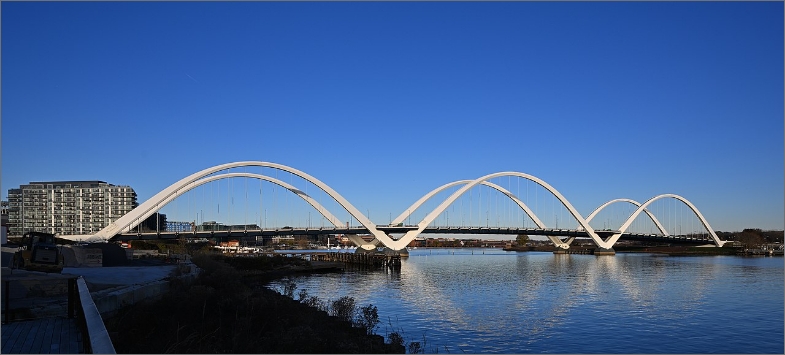

Bridges
Wisconsin’s 14,412 bridges provide critical connections to schools, hospitals, offices, and more. Bridge owners in Wisconsin have long prioritized investment in bridges, but the rate of improvement has stalled. In 2023, 6.5% of bridges in Wisconsin were rated with at least one major structural component in poor condition, per the National Bridge Inventory rating system. This percentage was slightly lower than the national average but relatively unchanged from the previous decade. Poor bridges are not unsafe, but they do require significant maintenance, rehabilitation, or replacement. The Wisconsin Department of Transportation tracks and manages bridge assets and plans future maintenance and replacement needs. However, local and federal legislatures must agree on how to fund these needs. Both a state fuel tax increase and establishing mileage-based user fees are initiatives that could be explored to close the funding gap and improve the condition of Wisconsin’s bridges.


Broadband
Broadband infrastructure delivers connectivity across wireline and wireless modalities for Wisconsin residents and businesses to access information, interconnection, and commerce. Civil engineers play an increasingly important role in installation and operation as broadband networks grow and iterate for greater performance and resilience. Wisconsin’s Broadband Office has increased its programming and technical capacity to deploy at least $1 billion in new federal investments from the 2021 Infrastructure Investment and Jobs Act (IIJA). The Office leverages those resources to reduce the 5.4% of all locations in Wisconsin unserved by broadband and 7.4% with below-standard connectivity speeds. Infrastructure deployment and upkeep challenges vary by geography. Wisconsin’s rural areas require more government incentives and facilitation for the investments of internet service providers. Households of school children are another challenge, as one-third of state school districts report that at least a quarter of their students lack home internet access necessary to complete homework. While Wisconsin implements IIJA funding, decision-making on broadband would improve with more robust and independently verified information on network performance and follow-up analysis of planning recently completed for federal compliance.
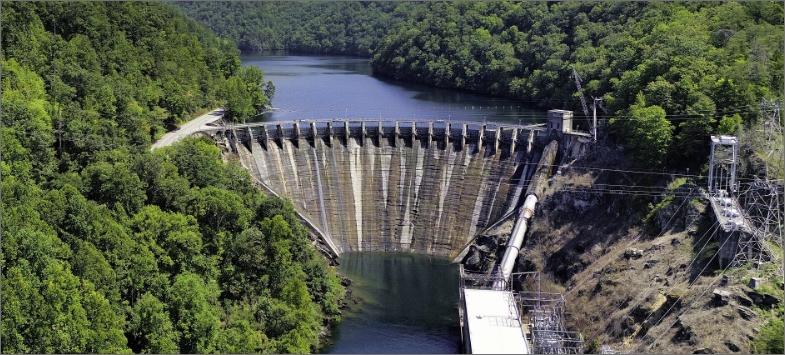

Dams
Wisconsin’s dams are owned by private entities or government, and they are regulated by either the state or federal government to ensure public benefits of water supply, hydropower, inland navigation, flood protection, tourism and recreation, irrigation source water, and fish and wildlife habitat. Several hundred of the approximately 1,000 largest dams have greatly exceeded their design life of 50 to 75 years and need rehabilitation. The Association of State Dam Safety Officials (ASDSO) estimates $1.75 billion as the total cost to rehabilitate Wisconsin’s dams rated in less than satisfactory condition and $380 million for those structures with high-hazard potential. Over the past several years, more frequent and intense precipitation events have resulted in floods challenging dam performance. To protect the health, safety, and welfare of the public and minimize the possible adverse consequences from dam failures, increases to rehabilitation funding and regulatory resources are needed and overdue.


Drinking Water
Wisconsin has more than 11,200 public water systems, the most in the nation. More than 80% of these are in areas where people do not remain for long periods, such as campgrounds, parks, and restaurants. In comparison, 5% of these are municipal systems that serve more than 4 million residents, or 95% of the entire population of Wisconsin. Water systems are generally encountering several natural and manmade water quality issues, and must contend with aging water treatment and distribution systems to serve their communities in the future. Bacteria, nitrates, arsenic, radium, lead, and PFAS forever chemicals are significant water quality concerns. In total,the EPA estimates that $11.8 billion is required in Wisconsin to address infrastructure over the next two decades. Needs will likely increase over time unless immediately addressed. Recent increases in drinking water infrastructure funding through the Infrastructure Investment and Jobs Act are laudable but insufficient to ensure residents have better access to safe and reliable supply for future generations.
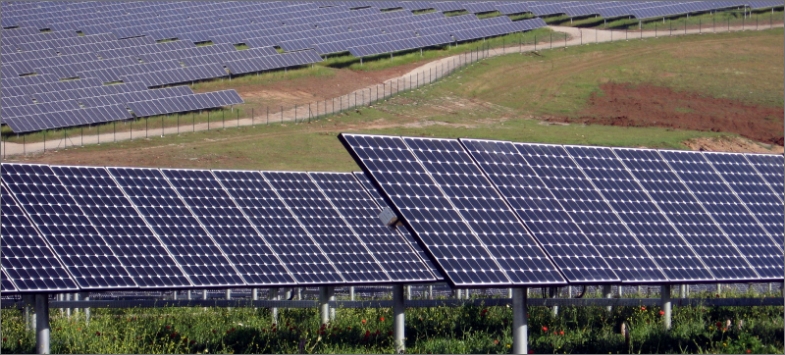

Energy
Wisconsin faces challenges to maintain electric grid reliability as demand for energy increases and state and regional partners convert generation from fossil fuels to low-carbon sources. Duration and frequency of outages have increased over the last five years. Coal power production has dropped by one-third, and meanwhile, natural gas production has increased by two-thirds from 2015 to 2020. Wind, hydroelectric, and solar increased in that span, but remain fractional compared to gas generation, where overreliance on one source presents resilience risks. Electric rates help to fund significant portions of energy grid projects connecting power from sources to uses, and Wisconsin’s $0.14 per KWh rate is slightly higher than the national average. However, residents pay less on monthly bills than the average partly because conservation efforts appear successful. Wisconsin’s energy transmission systems must be expanded, improved, and maintained to connect new solar and wind generation. The electric distribution system will require additional maintenance and hardening of the infrastructure to provide reliability because of extreme weather events.


Hazardous Waste
Wisconsin has been a leader in hazardous waste minimization and management, hazardous waste cleanup, and identifying emerging contaminant issues. The state has a strong history of pollution prevention programs and activities, such as removing mercury from schools. The impact of those early activities is evident in today’s hazardous and solid waste management programs and the Wisconsin Department of Natural Resources Green Tier program, the first of its kind in the country. Green Tier is a nonregulatory voluntary program to support businesses, local governments/communities, and other organizations in doing more than regulations require, going beyond compliance, and documenting their efforts with annual audits and reports. As the United States moves to ‘green technologies,’ there is a demand for the critical minerals needed to produce them. Both the recovery and recycling of critical minerals in waste reduce the need for mining.
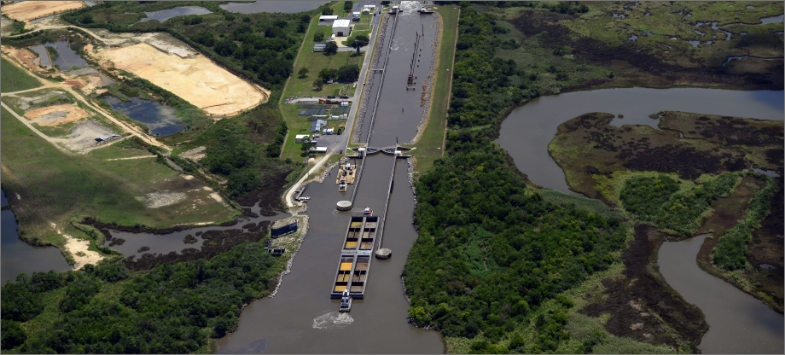

Inland Waterways
Wisconsin’s major inland waterway corridor is the Mississippi River, which provides 213 miles of navigation channels maintained by the U.S. Army Corps of Engineers (USACE). In 2021, 26.8 million tons of cargo were transported over barges on this “freight highway.” Locks and dams along the inland waterways are now asked to perform beyond their intended design life. Additionally, since the early 2000s, the percentage of vessels experiencing delays has increased from 6% to 43%, and the average delay per lockage has risen from 26 to 93 minutes. The minimal available funding has only kept the locks and dams functional with component replacements. However, the increased frequency of scheduled and unscheduled maintenance work has decreased system performance. Major rehabilitation of these structures with increased, predictable funding is needed to ensure long-term durability.
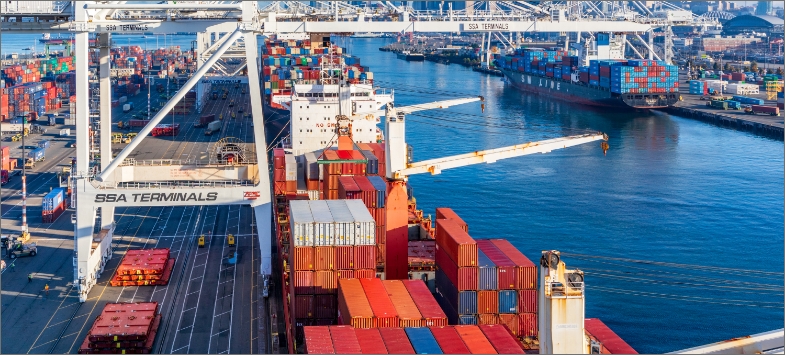

Ports
Wisconsin’s port infrastructure – with 29 harbors and eight major ports – facilitates both safe and efficient transportation of cargo and people. The system generates over $1 billion of economic activity and reduces road congestion, offering an alternative to heavier-polluting land freight movement. Ports in the state are in fair to good condition but show general signs of deterioration that require attention. Some infrastructure elements, including facility resiliency to changing environmental conditions, exhibit significant deficiencies in conditions and functionality, increasing vulnerability to risk. Approximately $129 million was invested in port infrastructure from 2018-2022, with an additional $74 million planned after 2022. Current funding levels are satisfactory for existing needs. Environmental challenges, however, such as lake level changes and severe weather events, require increased attention to maintain resilience. Wisconsin ports are exploring improvements in vehicle electrification and the beneficial use of dredge material. Cruise lines for tourists have been added to two ports in Wisconsin. Wisconsin’s port infrastructure meets the state’s needs but will require ongoing investment and strategic planning to adapt to future changes and challenges.


Public Parks
Wisconsin’s state and local park systems have suffered from neglect due to reductions in government funding at all levels. Wisconsin State Parks had a $1 billion backlog of critical infrastructure needs as of early 2023. The Wisconsin Department of Natural Resources has used its limited resources to address water supply and wastewater issues. Still, it faces new treatment challenges like PFAS contamination of potable water sources. Milwaukee County Parks, for example, has a significant backlog of repair needs. Since the state legislature eliminated general fund revenue for state parks in 2015, the system has struggled to generate sufficient resources for operations from user fees, permits, and licenses. These mechanisms also inadequately facilitate capital budgeting and larger upgrade projects. State-imposed limits on local tax levees have also constrained the ability of local governments to fund their park systems. To improve Wisconsin park infrastructure performance, state and local governments need to develop new sources of park revenue. Changes could include reinstating general tax revenue funding, adding or increasing user fees, and applying sales and use taxes on specific items and businesses.
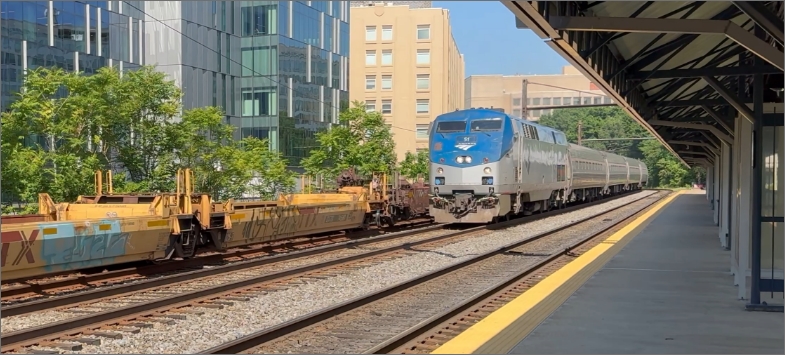

Rail
Wisconsin’s rail system has approximately 3,300 miles of track, 82% of which is owned and operated by 11 private railroad companies, with the remainder publicly owned. Some 77% of the rail system meets Class II operations standards. Thirty % of freight (by value) moving in Wisconsin is transported by rail. Of all modes, freight movements by rail are forecasted to increase the most, with a 172% increase expected by 2050. Three passenger rail services currently service pockets of Wisconsin, although expansion is expected in terms of existing services and new rail lines.
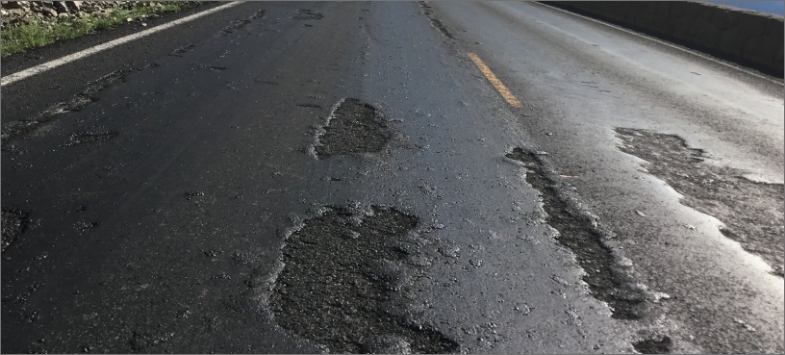

Roads
Recently, increased funding from local, state, and federal governments — including 2021’s Infrastructure Investment and Jobs Act — has improved the performance of Wisconsin’s 115,500 miles of roadways. 86% of state highway pavement was rated in fair or better condition in 2023, up from 83% in 2020. Challenges exist for sustaining roads throughout the state including the recent rise of costs due to inflation and limitations in workforce. Deferred maintenance also significantly increases repair costs. Deficient Wisconsin roads cost state motorists $7.6 billion annually due to vehicle wear and tear, wasted fuel due to congestion, and the overall cost of road crashes. Almost 600 road users lost their lives in Wisconsin in both 2021 and 2022, but the statewide fatality rate was 10.1 per 100,000 residents – lower than the national average of 12.8. However, in rural parts of the state, Wisconsin’s fatality rate is double the national mark. To execute Wisconsin’s long-range Connect 2050 transportation plan, state and local decision-makers should harness recently beefed federal investments and craft financially sustainable funding mechanisms for road improvements as well as safer designs that move more people across all travel modes through the state’s diverse land uses.


Schools
Public information on physical infrastructure and facilities performance in Wisconsin’s 469 school districts – 2,242 schools in all – was too scarce or outdated to assign a letter grade. The Wisconsin Department of Public Instruction has not completed a school facility survey since 1999, so instead, the chapter reviews the top ten school districts based on enrollment. The assessment of these districts offers insight into statewide school facilities, but those systems are likely to have more technical capacity and funding methods than more rural and smaller systems. Project planning and prioritization are driven locally, and ballot box bond measures frequently support funding for necessary infrastructure work. Facilities planning and proactive work for resilience is therefore limited by unpredictable election results and the small portion of automatic tax funding appropriated to capital budgets. To better ascertain the conditions and needs of Wisconsin’s schools, the state should update its school facility survey and decision-makers should explore ways to increase funding for more capable
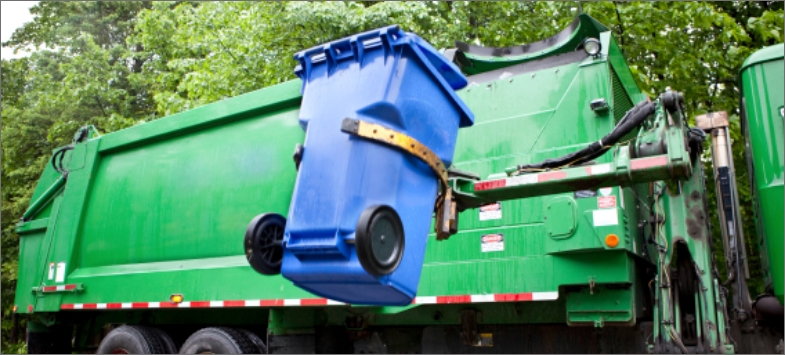

Solid Waste
Wisconsin households, businesses, and institutions generate 4.6 million tons of municipal solid waste (MSW) and recyclables yearly. The predominant method for managing MSW in Wisconsin is landfilling. Those facilities now have sufficient capacity and good conditions because of regulatory oversight and increases in tipping fees controlling demand for landfill space. Recycling rates have stagnated in recent years, and those diversion programs are funded primarily by historically low values of recycled goods. However, Wisconsinites recycle more than the national average. The state set a goal to reduce food waste by 50% by 2030, which is aligned with EPA’s national goal. Attaining the food waste mark and other solid waste goals requires Wisconsin to transition to a system that values MSW as a resource to be utilized rather than a waste to be landfilled. Recycling higher portions of waste generated is one of several “7R” methods Wisconsin should continue supporting, including reducing single-use items. The 7Rs are: 1. Rethink; 2. Refuse; 3. Reduce; 4. Reuse; 5. Repair; 6. Recycle; and 7. Rot. (4) Both incentives and mandates, balanced between economic, social, and environmental impacts, are needed for all MSW management efforts to succeed in the future.


Stormwater
Stormwater management infrastructure is a network of structures and practices that work together to manage the flow of rainwater and snow melt. It includes items such as storm drains, culverts and sewers, detention ponds, permeable pavement surfaces, and green infrastructure spaces built to hold and absorb water. These systems can help reduce flooding, improve water quality, and protect downstream natural habitats by controlling water movement across built and natural landscapes. Wisconsin’s stormwater infrastructure faces critical challenges that demand urgent attention, especially in an era of increasing frequency of extreme weather events and continued urbanization. Insufficient capacity, deteriorating conditions, neglect, and nearly $1B in funding shortfalls threaten public safety and infrastructure resilience. Existing systems are already struggling to meet current demands, and without strategic intervention, they may fail to address future needs. The chapter delves into an analysis of Wisconsin’s stormwater infrastructure based on eight key criteria, offering opportunities to collaborate to raise the grade and ensure the long-term sustainability and resilience of this vital system.


Transit
Reliable and frequent transit service reaching essential life destinations is necessary for a balanced transportation system. Transit provides mobility to work, school, and recreation for the one-third of Wisconsin residents who do not drive and reduces road congestion attracting drivers to shift modes. Due, in part, to temporary infusions of federal funding to support operating costs, transit services were preserved during the COVID-19 pandemic. However, lasting shifts in travel habits have limited ridership recovery. Transit performance improvements are also hamstrung by Wisconsin’s statutory limitations on local property tax levies and other methods to fund big projects and service level increases. In the first year of 2021’s Infrastructure Investment and Jobs Act (IIJA) federal transit support in Wisconsin grew 32% – helping to deliver Madison’s new East-West Bus Rapid Transit. To serve residents who cannot afford vehicle transportation or are unable to drive, as well as ease road congestion, the state should consider removing structural constraints from funding methods and leverage federal grants to improve existing services and expand transit’s appeal.
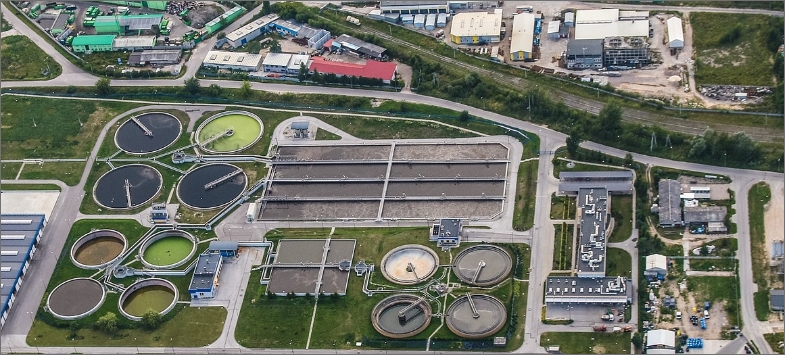

Wastewater
Wisconsin’s municipal wastewater utilities are challenged by aging infrastructure, growth, and new environmental controls on wastewater discharge. Worthwhile projects far exceed available funding. In February 2024, the state government informed applicants to the Clean Watershed Fund that demand for the program exceeded capacity by $654 million in the 2023-2025 cycle. Wisconsin’s estimated needs for municipal wastewater infrastructure maintenance and upgrades total $5.5 billion over the next twenty years. Larger facilities are adopting asset management plans, a tool to proactively track and maintain their systems, but smaller facilities lack the resources to develop such plans. Improved resilience of wastewater conveyance, collection, and treatment systems is key to addressing more frequent hazard events, but rural facilities struggle to implement solutions like backup energy systems. In the last five years, the State of Wisconsin has seen an increase in toxic discharge test failures at wastewater treatment facilities caused by overdosing of phosphorus treatment chemicals or industrial chemicals seeping into municipal systems. As facilities start to have PFAS limits applied in their permits for effluent and biosolids, more innovative solutions will need to be designed and implemented to meet permitted limits.
State Fact Sheet
Download Fact Sheet
Aviation
$50.1 million in 2024 airport improvement grants across 8 major airports

Drinking Water
$11.8 billion total drinking water need

Transit
43.5 million passenger trips across 78 systems in 2023

Bridges
14,446 bridges, 6.5% of which were structurally deficient in 2024

Hazardous Waste
56 Superfund sites

Wastewater
$5.5 billion total wastewater need

Dams
200 high hazard dams

Levees
53 miles of levees protect 4,400 residents

Roads
45% of roads are in poor or fair condition

Connect with Your Legislators
Let everyone know how important it is that we continue to invest in the future of America’s infrastructure.
Take Action Today
